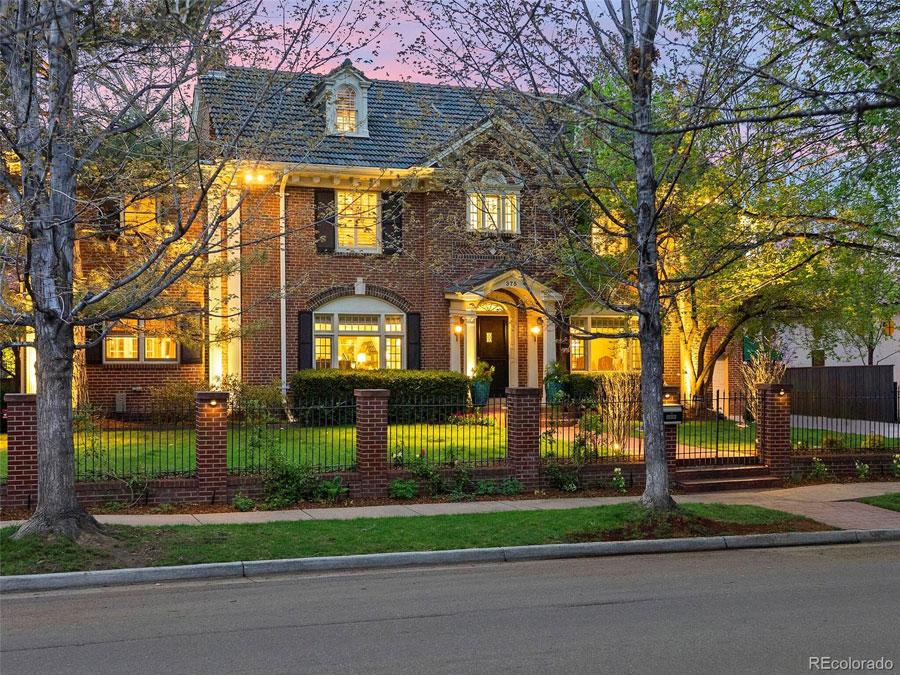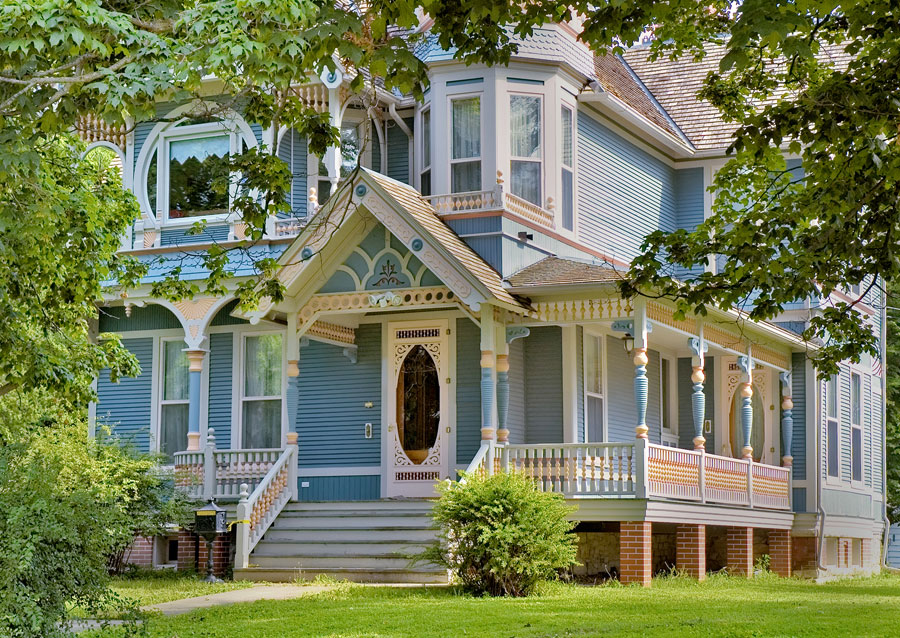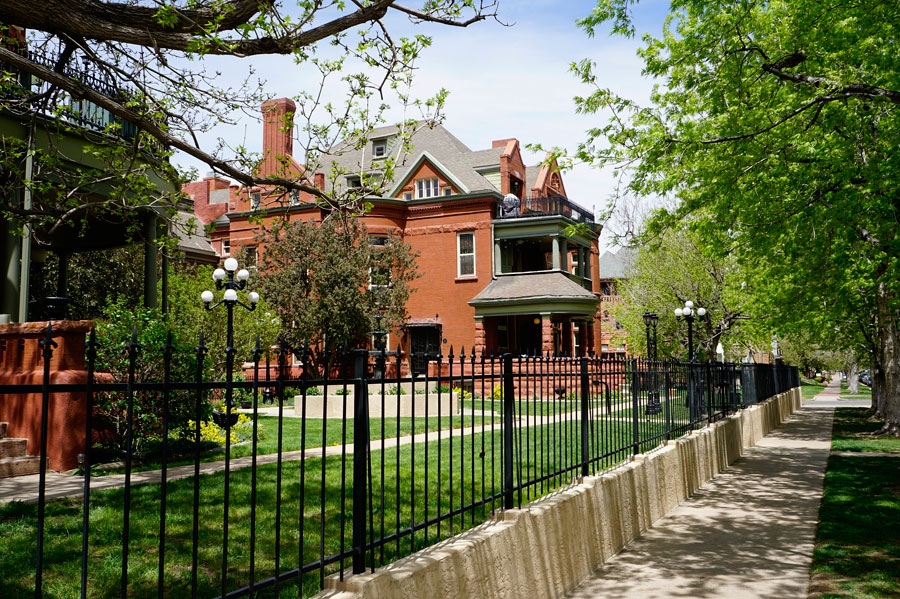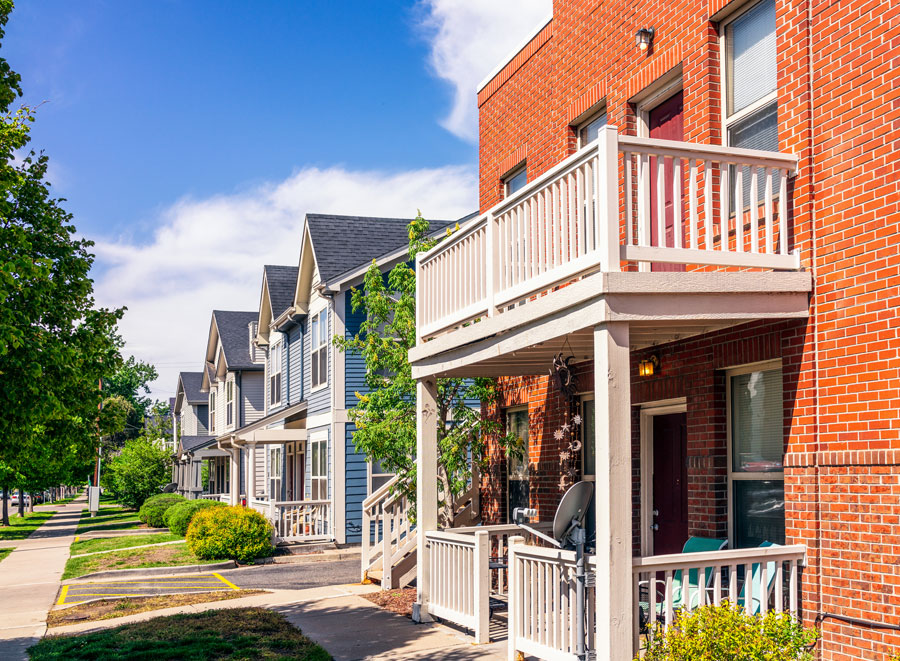
From their charming architectural features to the incredible stories behind their walls, historic homes are incredibly popular among buyers. The Mile High City is steeped in history, rising from its humble beginnings as a mining settlement to the modern metropolis it is today.
As a longtime resident of Denver and a Historic Homes Specialist, I have admired my city’s efforts to preserve and restore notable structures, landmarks, and houses. As a licensed Realtor and a Pricing Strategy Advisor (PSA), I am pleased that Denver has become the ideal city for buyers searching for historic homes.
If you’re acquiring one of the historic homes for sale in Denver Denver for the first time, it’s important to know the difference between buying a regular home and an historic one. The guide I prepared will tell you everything you need to know about buying historic property. My goal is to have you focus on the excitement of shopping for your future home as I work on the nitty-gritty of the buying process.
Table of Contents
A fascinating history of Denver’s historic homes

The history of Denver’s storied homes has always fascinated me. It began in the summer of 1858, when a small band of prospectors arrived at the base of the Rocky Mountains and made a startling, region-defining discovery: gold. Though the quantity of the gold was not as vast as the reserves found in California, the mere whisper of the presence of gold convinced many others to make their way to the Rockies. It didn’t take long for simple tents and crudely constructed log cabins to turn into full-fledged properties as more and more people arrived in what would eventually become Denver, Colorado.
The 1860s and 1870s: A mishmash of styles
Interestingly enough, many of the early historic homes in Denver in the 1860s and 1870s were actually constructed without the input of an architect. This, combined with the fact that anyone who arrived early enough could simply stake a claim to plots of land and then sell them to those who arrived after, created a mishmash of architectural styles.
The 1880s: The rise and fall of Victorian homes
It wasn’t until a decade later that Victorian-style houses became more prevalent in Denver. With cold winters and fireproof construction ordinances, it became common and practical to use brick in the construction of homes. The 1880s marked the height of popularity of the Victorian style, which included Gothic Revival, Italianate, Queen Anne, Romanesque, and Second Empire. It was, however, short-lived.
The 1890s: Close to 6,000 homes from this era survive to this day
By the 1890s, Victorian style began to make way for the more streamlined lines of Neoclassical and Colonial Revival homes. The change was largely due to the Silver Crash of 1893. Despite this, the 1890s are an important time for Denver’s historic homes, as roughly 5,900 single-family homes from this decade are still in existence today. This comprises about 70% of the 19th century housing stock in the city..
The 1900s: Introducing the architect and two new home styles
Denver grew exponentially in the 1900s as it recovered from the Silver Crash. However, the Neoclassical and Colonial Revival style that held sway during the crash remained as popular as ever. The wealthy members of the community had grander ideas. They began commissioning architects to design their new homes. As a result, their houses were faithful to the elements that defined their chosen architectural style. Meanwhile, the houses of the middle class, which were derivatives of the Neoclassical and Colonial Revival styles, gave rise to two other specific styles: Denver Square and Classic Cottage.
Throughout the decades, new residential architectural styles became more prominent. These included the Bungalow (1910s), Tudor (1920s), and English Revival (1930s).
Needless to say, the architectural history of Denver, Colorado is especially fascinating because its style evolution tells the story of the city as well. It comes as no surprise that Denver has gone out of its way to preserve and restore the remnants of its past, allowing homebuyers the privilege of owning the city’s historic gems.
What you need to know about buying a historic home

As I mentioned earlier, there are differences between buying a historic home and buying a regular property on the real estate market. Knowing these can be key in successfully finding the perfect historic homes for sale in Denver.
Make sure the home is truly historic
When does a home become “historic”? The simple answer: it must be at least 50 years old. However, age isn’t the only factor. In Denver, the home should be located in one of the city’s historic districts in order to qualify for Historic Designation.
That’s not all. Certain homes can still be designated as historic if the property meets the following criteria:
- The property is connected to significant historical events.
- The property was owned or occupied by historical figures.
- The property is considered an embodiment of a particular historic style or master architect.
- The property has provided important historical information.
Meeting any of the above criteria may accelerate a property’s ability to achieve historic designation.
The pros and cons of buying a historic home
Just like purchasing any home, there are pros and cons that buyers should be aware of when it comes to historic homes.
PROS:
- Owners of historic homes may be eligible for state tax credits. These concessions help offset the cost of repairs and preservation of the home. In Denver, owners of historic homes may be eligible for a 20% to 25% percent Colorado state tax credit if their property is listed on the State Register of Historic Places or National Register of Historic Places. Alternatively, homes that have been locally designated by the City of Denver are also eligible.
- Property value is protected, making historic homes a great investment. Research has shown that Victorian homes and other historic properties on the market have steadily maintained or increased in value, even when other real estate in the area are on the decline. There are many reasons for this, including the fact that rules surrounding the external appearance of historic homes in a given area heavily dictate what can or cannot be added or changed. This eliminates the risk of unsightly additions to other homes that lower the value of other properties in the area. Indeed, a home in a well-preserved historic district can increase its value by up to 20%.
- You’re helping keep the rich history of Denver alive. While the architecture of the historic homes in Denver reflect the city’s storied past, every historic house has an individual story as well. Purchasing and preserving a historic home help keep these stories alive and ensure that future generations can continue enjoying these treasures. The benefits go beyond a financial payoff – the responsible homeowner’s stewardship is a gift for the ages.
CONS:
- You’ll need approvals to renovate. The regulations that protect the value of the historic home can also make it difficult to renovate it. Even changing the position of windows or adding a patio can be an issue. For the most part, renovating sections that have been deemed as “additions” rather than part of the original house should pose no problems, but you’ll always have to run renovations by your local council to double check.
- You’ll need to work with specialized contractors. There are many reasons why repairs or renovations to historic homes tend to cost more. For one, you will need to find contractors who actually specialize in the restoration, renovation, or repair of historic homes. In the case of homes that have been unoccupied for years, you may also need to repair the roof, flooring, plumbing, and the like. There’s also the matter of finding the right materials and designs based on the style of the historic home. In some cases, you may need to find custom-made pieces in order to stay as accurate to the home’s style as possible.
- You may face higher rates. Given the age of most historical homes, many lending and property insurance institutions may shy away from historic real estate. This is mostly because these properties present a higher risk than modern houses. Therefore, you may face higher premiums and mortgage rates. Discuss available financing options with your agent before submitting any offers. The last thing you want to happen after you win a bid is to discover that you can’t afford your historic home.
Denver’s historic neighborhoods

Though historic homes can be found all over Denver, the city has designated historic districts/neighborhoods. If you’re thinking of buying a historic home in Denver, these are the neighborhoods to check out:
- Curtis Park/Five Points
Often touted as Denver’s oldest neighborhood, the area is also home to several historic hotels, music venues, and dive bars. Many of Denver’s leaders, mayors, governors, and prominent business people have called Curtis Park/Five Points home.Common Architectural Styles: Italianate, Queen Anne, Second Empire, Romanesque, Carpenter Gothic
- Potter Highlands
Situated on a hill overlooking the rest of Denver, Potter Highlands offers many international dining options. The area is also family-friendly with parks, playgrounds, and recreational facilities for children.Common Architectural Styles: Queen Anne, Craftsman Bungalow, Classic Cottage, Denver Square, Colonial and Dutch Revival, Mission, Prairie Style
- Capitol Hill
Capitol Hill boasts Denver’s oldest buildings and homes, many of which date back to the late 1800s. It is also well known as a haven for artists, offering numerous restaurants, clubs, bars, concert venues, and cultural centers.Common Architectural Styles: Romanesque, Queen Anne, Denver Square, Art Deco, Italianate
- East 7th Avenue
Denver’s largest Historic District is located in the heart of the city. Most of the homes on East 7th Avenue were built from the 1890s to the 1930s, creating a district that captures and reflects the march of time within Denver. The area has several parks.Common Architectural Styles: Neoclassical, Colonial Revival, Mediterranean Revival
- Country Club
Though the neighborhood is primarily residential, Country Club features a few elegant retail establishments and restaurants. It also has some of the city’s grandest luxury estate homes.Common Architectural Styles: Denver Square, Gothic Revival, Colonial Revival, Mediterranean Revival
- Baker
Baker received its historic district designation in 2000. The district offers a vibrant mix of industrial, residential, and commercial properties, making it a perfect area for those who love to explore the local scene.Common Architectural Styles: Queen Anne, Italianate, Classical Revival, Dutch Colonial Revival, Denver Square
- Montclair
Originally developed as a small suburban community, Montclair was named a historic district in 1975. The area hosts a number of restaurants beloved by locals and community parks lined with leafy boulevards.Common Architectural Styles: TB Homes Bungalow Style, Queen Anne, Foursquare, Neoclassical, Bungalows, Tudor Revival
The best places to live are historic neighborhoods in the making

There are also historic homes that can be found outside of the aforementioned districts. While the following areas have yet to achieve historic district status, these neighborhoods are among some of the best places to live in Denver. Additionally, these areas are likely to achieve historic district status in the coming years.
- Park Hill
Park Hill consists of South Park Hill, North Park Hill, and Northeast Park Hill. In particular, South Park Hill and North Park Hill were included in 5280.com’s 25 Best Neighborhoods in Denveru..
Common Architectural Styles: Queen Anne, Italianate, Arts and Crafts Bungalows, Denver Square, Ranch, Colonial Revival, Tudor, Mid-Century Modern
- Whittier
In the past, Whittier was mostly overlooked for trendier neighboring districts. In recent years, however, it has quickly become one of the fastest growing districts in Denver. Primarily residential, Whittier boasts a handful of parks, including one of Denver’s city-operated dog parks.
Common Architectural Styles: Queen Anne, Tudor Revival, Denver Square, Bungalow, Dutch Colonial
- Washington Park
Named as the Third Best Neighborhood on 5280.com’s list, Washington Park is a lush and idyllic family-oriented neighborhood. Often referred to as “Wash Park” by Denverites, the neighborhood is home to two gorgeous lakes and formal flower gardens.
Common Architectural Styles: Classical Revival, Craftsman, Italianate
I will happily show you historic homes for sale in Denver located in other areas throughout the city. Call me at 303.941.6926 or contact me here to get started on your home search.
Quick tips for buyers of historic home

Dos and Don’ts:
DO:
- Work with a real estate agent with experience in historic homes.
- Familiarize yourself with the local laws and regulations surrounding the purchase and ownership of historical homes.
- Consider your financing options, taking into account potential repairs, prior to looking at historic homes.
DON’T:
- Assume any necessary repairs will be quick. You will need special permits and approvals.
- Work with random contractors or inspectors. Choose only reputable ones who specialize in historic homes.
- Forget to ask the specific history of each historic home you look at.
Questions to ask the seller
- What is the condition of the foundation?
This is especially important if the historic home hasn’t been lived in for a while. If there are issues with the home’s foundation, you’ll need to address it head on. When checking out a historic home, head to the basement first before looking at the rest of the house. - What parts of the home have been renovated or added over the years?
It’s often a good idea to know when additions, repairs, and/or renovations were done on a historic home. Understanding the age and condition of each area will give you a clearer picture of the home’s overall integrity. Similarly, knowing which areas are additions will allow you to plan out future renovations. - What’s the neighborhood like?
Although a brief overview of the historic neighborhoods was provided earlier, it’s still advisable to go on a deep dive of the area you hope to live in. I can provide insight on schools, community amenities, homeowners association rules, and so much more. - When was the home last inspected?
Obtain a copy of the last home inspection report. This should give you a good idea about areas that needed repairs. Keep in mind, though, that even if the inspection was conducted as recently as 12 months ago, it’s still important to have a home inspector specializing in historic homes to take a look at the property.
What home inspections may reveal
A home inspection will unearth several issues that you will need to take care of before you move into a historic home. The issues that you should be on the lookout for include:
- Outdated plumbing and electric system
Needless to say, faulty or worn electrical wiring is a significant safety risk. When it comes to plumbing, lead pipes are a definite red flag. - Possibility of asbestos or lead paint in the home’s interior
Since historic homes were built well before our modern codes, the possibility of a home using asbestos or lead paint is high. Both toxic substances will need to be removed by specialists. - Integrity of the roof
The structural integrity of the roof can sometimes be an issue for historic homes. Your home inspector should look at both the interior and exterior of the roof.
Investing in one of the luxury historic homes for sale in Denver, CO can be exciting and challenging at the same time – but the rewards are priceless.
If you’re in the market for historic homes, let me, Mark Muller, help make the process easy for you. I’m a licensed Denver Realtor, a Pricing Strategy Advisor (PSA), and a Historic Homes Specialist with unmatched experience and credentials. Having lived and worked in the Denver-Boulder area for close to 30 years, I have earned a reputation for being the Neighborhood Concierge because of my in-depth knowledge, insight, and unparalleled service as a Realtor.
Call me at 303.941.6926 or contact me here to get started on your home search.
